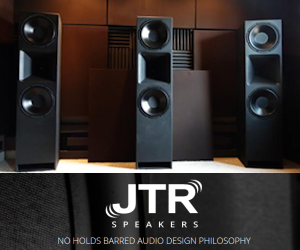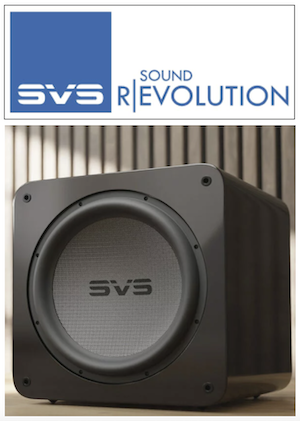Ok and why wouldn't the xmc-1 with dirac be able to handle this? You set the front 2 speakers to full... set the back to small... bass is routed from the backs to the front. LFE is then sent to front two mains. The only trick would be to use something like minidsp to send to the front 3
but using dirac/xmc-1 you still have bass management... the JTR speakers alone are more capable of low end then most subwoofers including the PB-16 ultra. and you have two...
Ok so going back to the notion of a complete set of full range speakers for mains and all effects speakers, I am saying that you would ideally want to make use of their full range capabilities in a system. below 100hz, certainly by 80hz the bass is omnidirectional and in the room, fully steady state. This means two things, 1) the bass will have hit all the barriers in the room long before it ever reaches your ears, and 2) the physics of human hearing will prevent us from locating LF sources. What that means is that we don't need to worry about the directional cues of low frequencies, there aren't any. Instead, we need to worry about the sound quality of LF's which are almost entirely a function of the interaction with the room. Because the best way to address LF smoothness is with lots of LF sources, having full range surround speakers could be a good thing. It's like having subs on your walls. The problem is, the way in which you would send surround signals and the way in which you would send bass signals is not going to be the same. There are two proper ways to setup the LF sources, neither of which is possible with any current bass management built into any processor.
Method 1) The Geddes and Harman approach, in which the bass is summed from all channels into its own LF channel and combined with the LFE channel. This is then sent discretely to each LF source, which is individually aligned, but globally EQed. Related to method 1 are some methods that rely on eqing individual subs, but none the less, the overall approach integrates the bass signal by maximally exciting all modes in the room and eqing flat. Delay isn't critical necessarily for achieving this but plays a role. The right delay for a LF source does not match its physical distance. This is the crux of the problem for any of the current bass management systems. The bass that is being redirected to the speakers can't have the delay modified for the bass signal separate from the surround signal before being mixed and sent to the surrounds. The delay is done on the final channel, not in the input matrix (where it would need to be addressed). As such, it's generally better to redirect the bass away from the surrounds to your separate subwoofers (though running the mains as full range is still a good idea of they can handle it. The delay is a non-issue for them given their placement and the ability to adjust the LF+LFE channel).
Method 2) The Bass Array approach. Since the surround speakers are now mounted on the walls and are full range sources (If they aren't mounted on the wall they need to be for this to work), you can delay the bass signal going to the rear surround speakers to cancel the length mode. This is not possible for the same reason as above (though the delay is different in this approach, much longer). This is the approach I'm most interested in testing myself. It's advantage is that the bass can be made to be even smoother, the negative is that you have free space bass. You are canceling all modes, its like canceling all reflections, so the bass sounds like it is outside, rather than in a room. I've discussed this idea with Dr. Geddes and a few other experts who feel that its an approach worth studying, but that people might find the sound objectionable. I've done some really basic proof's of concept on this idea, but my next step is the 10" surrounds I'm working with.
While your emotive is among the more flexible systems, it unfortunately doesn't have the kind of DSP capabilities needed to do it as I'm discussing above. It still was designed around the assumption that the sub or subs would handle the bass or that if the main channels are run full range, they get the bass discretely.
I'll also add that if I was designing a system's bass management to be completely ideal, I would allow overlapping bass sources to operate up into the transition zone at and above fs, but I would allow stereo bass operation down to 80hz. Below 80hz I would have complete summation. I don't feel I have a full grasp of how our hearing transitions it's directional capabilities below 700hz. I know that by this point it uses phase cues only and not intensity differences. I also know that as it gets closer to 100hz we become increasingly incapable of detecting the phase differences until we simply can't at all. That is true outside. In a room the bass is also hitting all the barriers so what we hear as a source isn't the sub but the room. That further muddles our ability to detect the location of the LF source. My guess based on what I've read is that it would be detectable down to maybe 200hz easily and become increasingly difficult, but that the exact frequency at which we couldn't hear at all would depend on our hearing, our system setup, and our room's size and acoustics. I can localize my rear subs if I set the low pass filter above 80hz, pretty easily, so I feel like it makes sense to allow stereo bass above that point. My guess is that you won't be able to detect in front or behind, but you might detect to the left or to the right. The DBA approach sets the rear sub's at a reduced level, which should also help keep the bass sounding more in front of us at these upper bass frequencies between 80hz and say 150hz.










